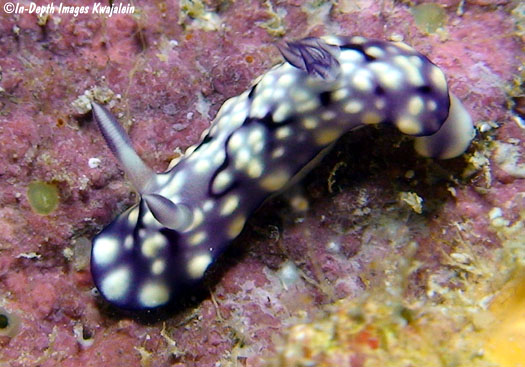
This animal has some similarities to Goniobranchus conchyliatus and Goniobranchus geometricus, both on general mantle coloration and in its habit of waving its anterior margin up and down as it crawls along. However, we believe it is a distinct and probably new species. Goniobranchus geometricus differs in having more continuous and distinct black lines or background dorsally, as well as having green or yellow rhinophores and gills and deep purple coloration under the anterior margin. Goniobranchus conchyliatus has similar yellowish pustules and more discontinuous dark lines on the mantle, but differs in having mostly orange rhinophores and gills and having purple to orange and black under the anterior margin. The species below has purple and white rhinophores and gills and the underside of the anterior margin is pretty much a reflection of the color of the upper surface of the anterior mantle (see one of the photos below). Also, the gills of this species are quadrangular in shape, and they are distinctly vibratile, much like Goniobranchus vibratus or many species of Thorunna. The first specimen, in the five upper photos below, was found in Kwajalein Atoll on 11 August 2008 under a small rock on top of a seaward reef spur at a depth of about 8m. It measured 17mm in length. A Marshall Islands specimen was figured in Gosliner et al (2018) as Goniobranchus sp. 11.

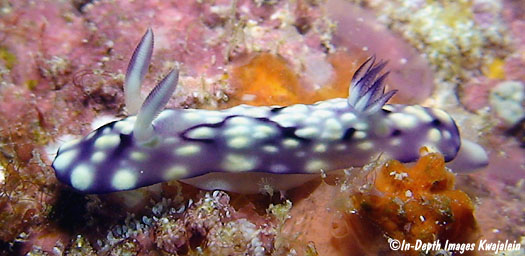
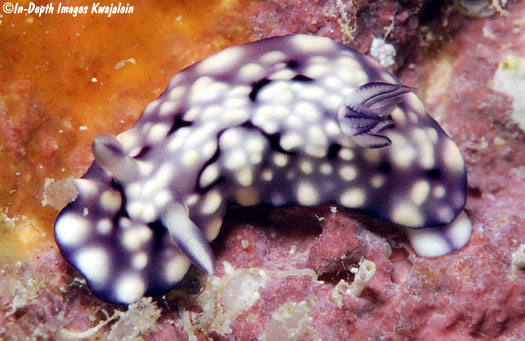
A close view of the rhinophores shows the wide lamellae and white core with posterior purple vertical lines. A similar line is on the anterior edge.
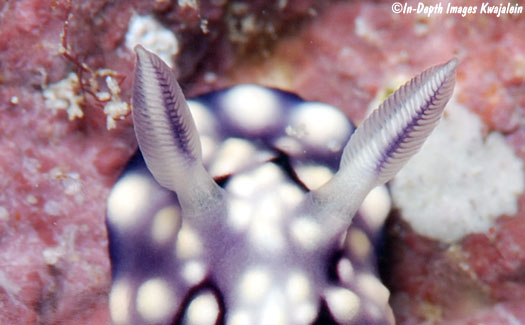
The underside of the anterior margin is a bit more purple than the top, but not dark purple like Goniobranchus geometricus or purple to orange and black as in G. conchyliatus.
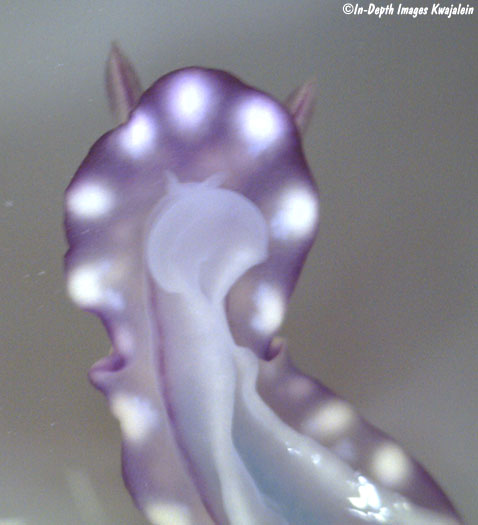
The second specimen was found under a rock on a shallow Kwajalein Atoll lagoon reef, depth 6m, on 28 December 2008. It measured 19mm in length and is shown below. It was found next to a clump of yellow sponge, but it could not be ascertained if it was eating it.
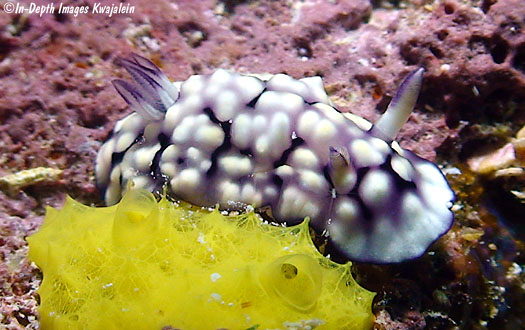
The small spider-like pycnogonid or crustacean in the photo below is apparently irritating the nudibranch, causing it to retract its rhinophore.
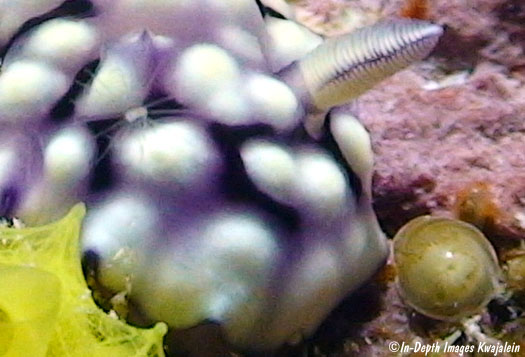
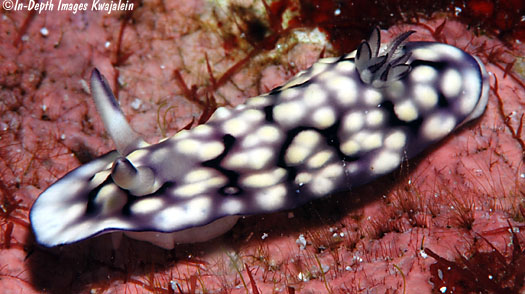
A third specimen was found under a rock at a depth of about 2m on a Kwajalein lagoon reef on 29 October 2011. This juvenile measured only about 5mm in length.
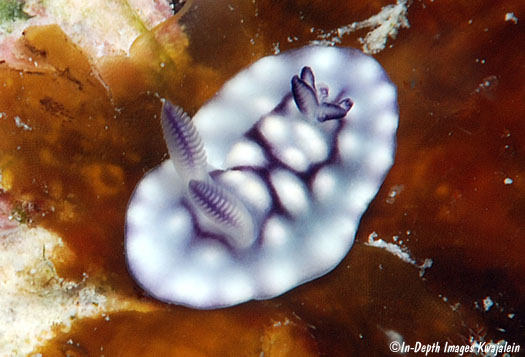
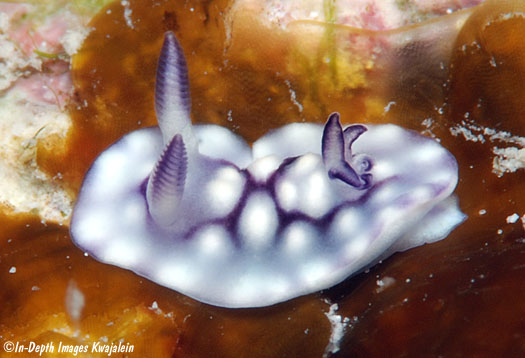
Christina Sylvester found the specimen below on the lagoon side of Kwajalein Island.
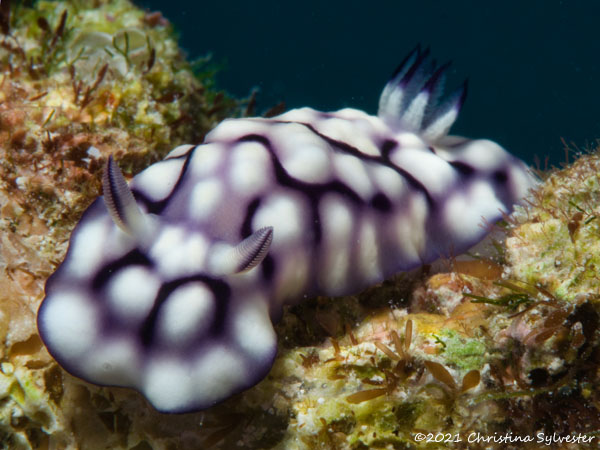
A number of specimens have also been observed at Majuro Atoll by Ken Cone and Beth Van Zummeren, including all those figured below.
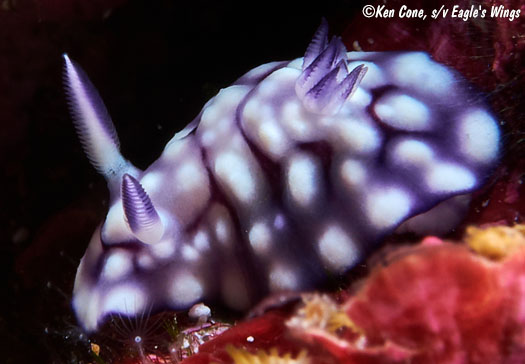
The Majuro specimen was in an area with many tiny spiked foraminifera.
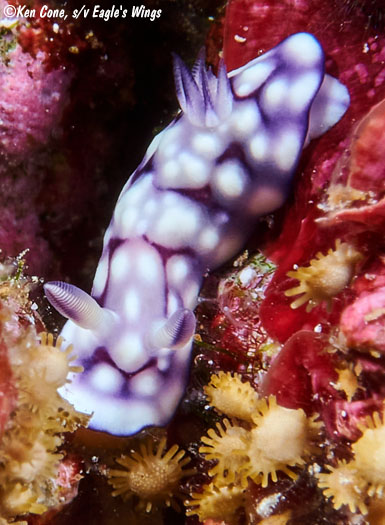
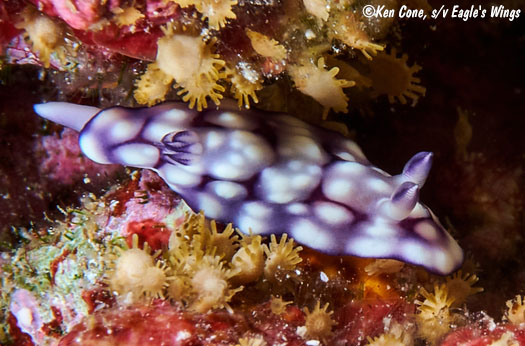
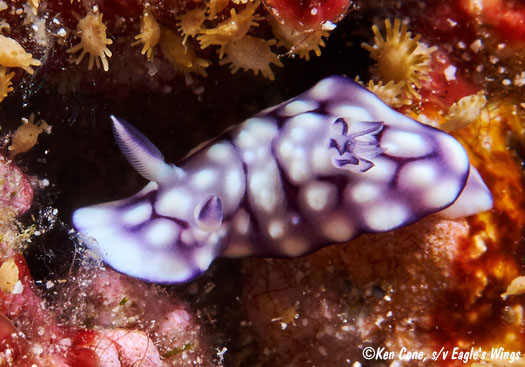
Another pair from Majuro.
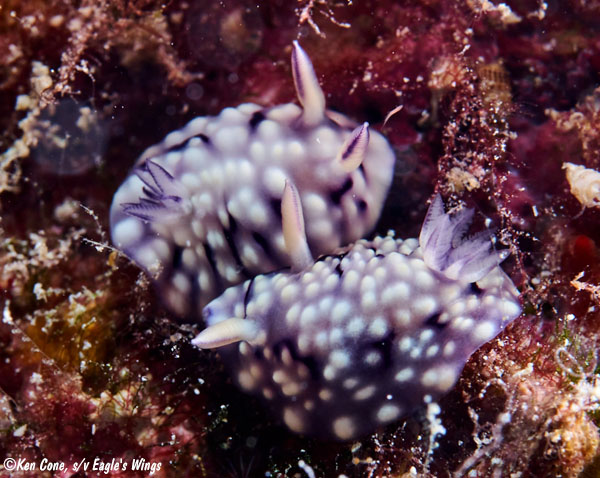
This one from Majuro had an odd deformity with rhinophores fused at the base and emerging from the anterior dorsum from the same opening.
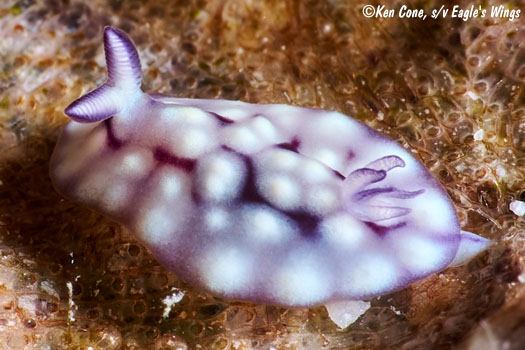
A tiny juvenile from Majuro.
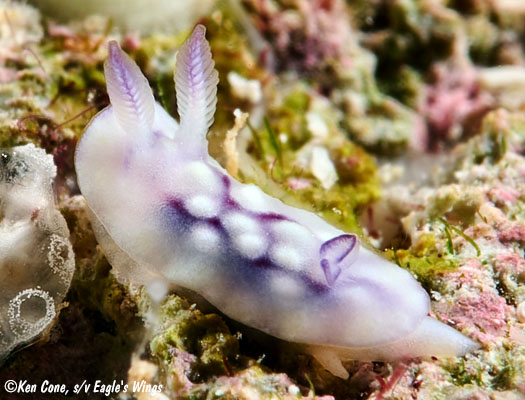
Created 15 August 2008
Updated 16 November 2021